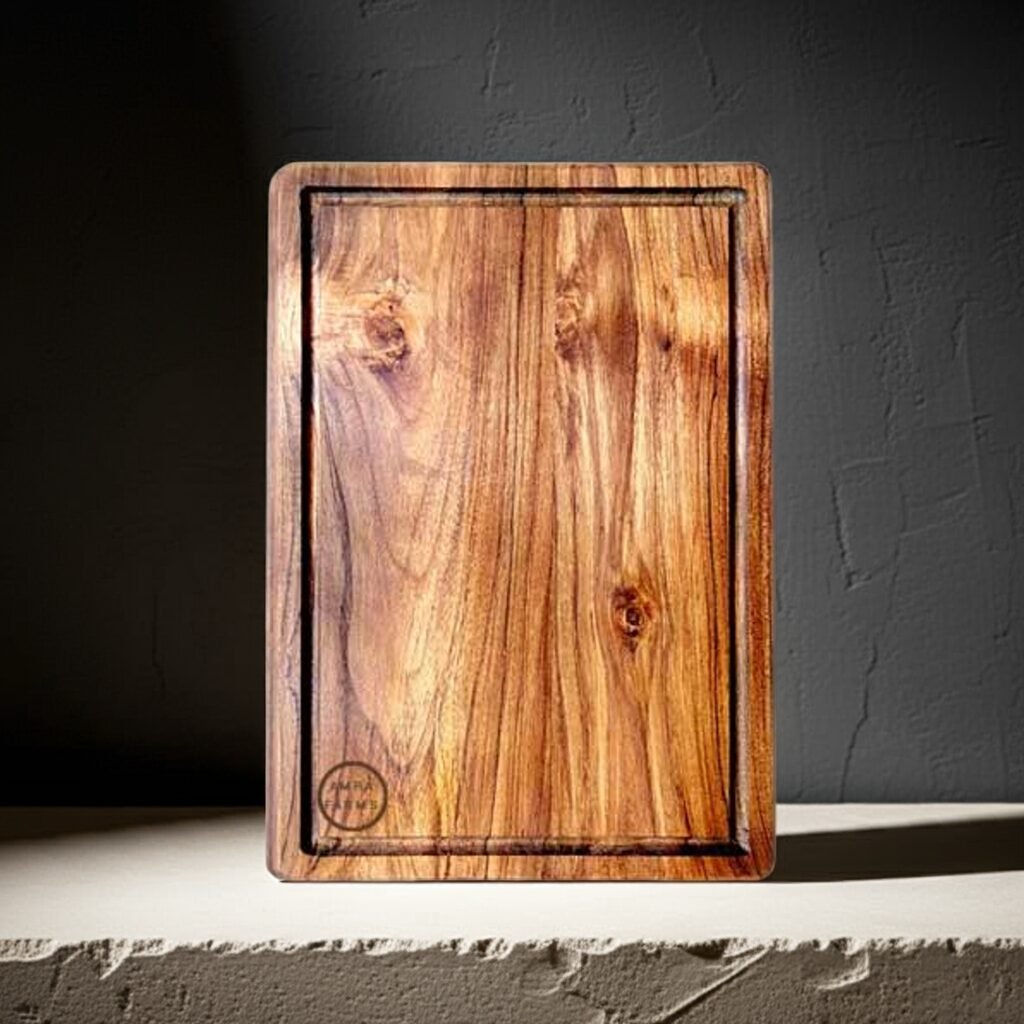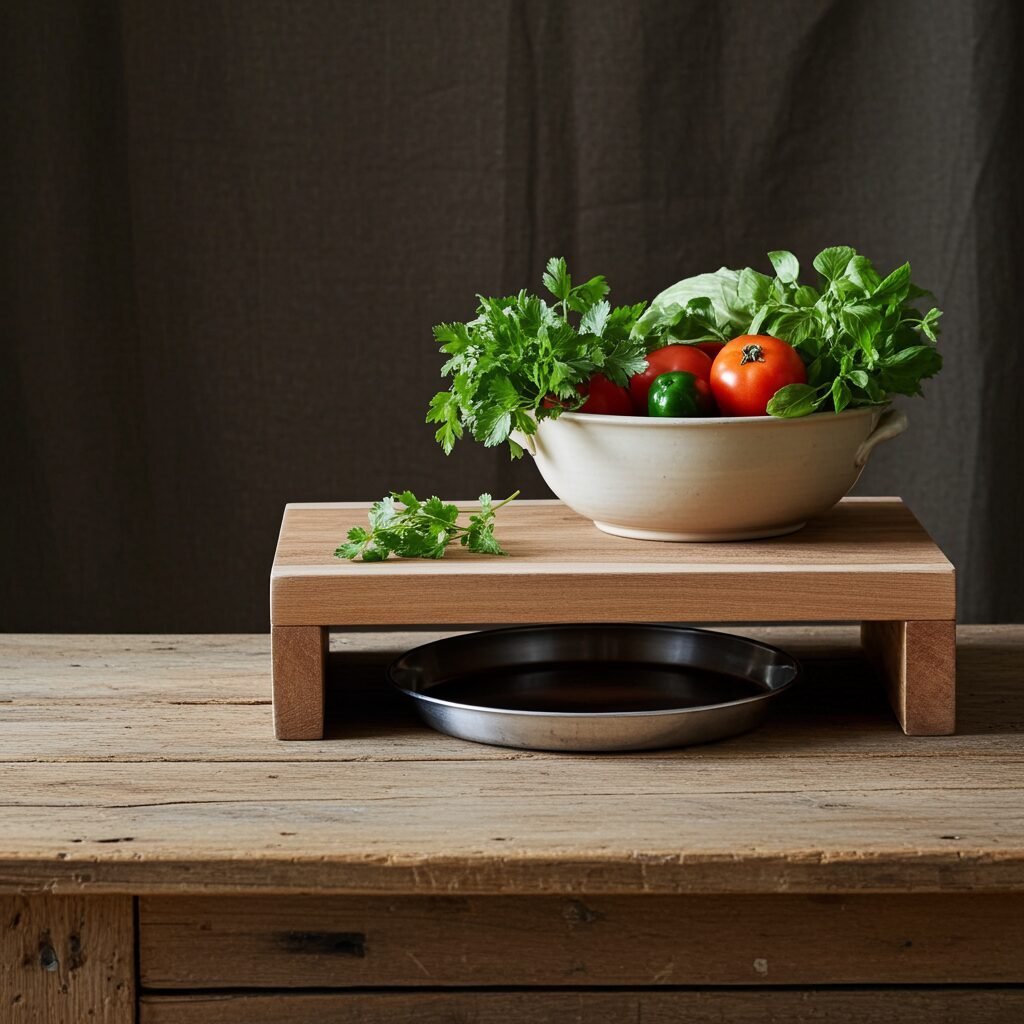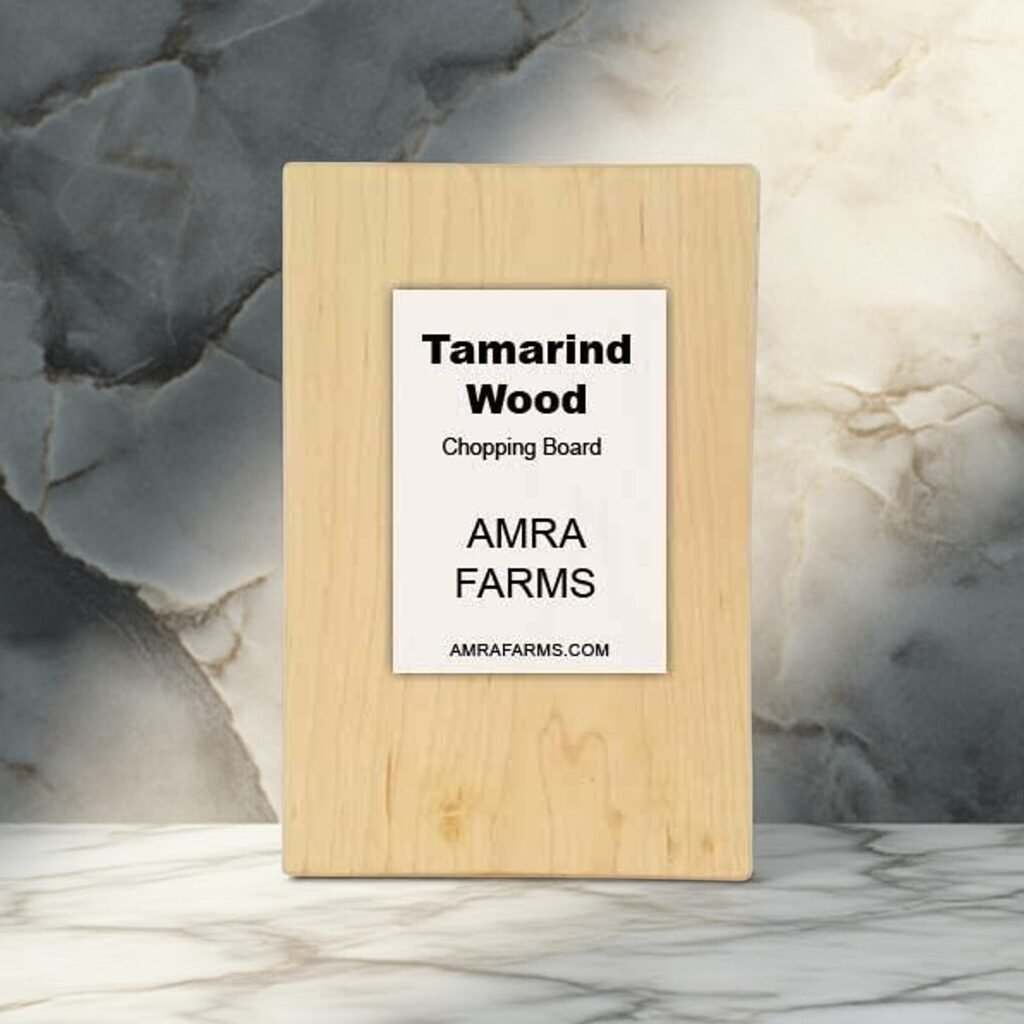Your cart is currently empty!
How to Choose a Chopping Board – Chopping Board Types






The wide range of materials and designs often confuse chopping board buyers. This guide helps you choose the material and the right design for you. Your chopping boards should meet certain requirements which are basic but should also address some of your personal needs which you face presently. Think of all the problems you face with your chopping board in the first place. Worried about cross-contamination? Does your chopping board slip, or are you looking for an anti-slip cutting board? Maybe you are looking for some features like juice grooves because your countertop is always messy after cutting tomatoes or meat? Or it’s not heavy-duty enough to hold its place while you are doing your cutting and chopping.
Most home chefs will agree that chopping takes up more than 3/4th of their time in the kitchen while cooking. The process involves just two accessories in most cases: a knife and a chopping board. Both are crucial for the process. If one fails, the process starts to slow down, increasing frustration. A slipping board or juice all over the countertop is just adding more time to cut the ingredients, adding to frustration.
This guide can help you with choosing the right board, but you need to know what the exact problems are before you choose the right board.
Importance of a good chopping board in the kitchen While a chopping board may seem like a trivial object in the kitchen, it’s also one of the most used accessories. A chopping board helps you keep your food clean with minimal cross-contamination. A chopping board, or for that matter, any kitchen accessory, is purchased to make our life easy, not hard. The purpose of the chopping board is to ensure easy cutting of ingredients, safety while cutting them, and ensuring a clean cutting surface.
A good chopping board should help you with cutting vegetables, meat, and bread with little to no effort. They should be easy to clean and maintain while keeping your countertop as clean as possible. They should be big enough to handle the food you cut but small enough to handle. You don’t want a 3-foot-long chopping board that is 3 kg, bulky, and hard to carry around. A chopping board, especially in the home kitchen, should be easy to place in the limited space and also easy to store. If you are one of those who find cleaning the chopping board hard and use a dishwasher, then you should find one which is dishwasher safe. There are other features that you should consider depending on your personal requirements.
How the right board can improve food prep, hygiene, and knife longevity We may sound biased, but the fact is that wooden chopping boards are relatively better than most other boards. Not to say that they are bad. Steel boards, plastic, and glass boards all have their own set of benefits. For instance, steel and glass boards have a longer life than most other materials. They can go on forever, and you will never worry about getting them to wear out. Plastic boards are pretty much cheap and easy to maintain, and they are dishwasher safe. Each board has its own set of benefits, and the material you use should align with your requirements. That is more important.
With the right board, you should consider every factor. How does your board help with food preparation? Can you double your chopping board as a kneading board or a chapati rolling board? Can your chopping board be used as a tray when and if required? Do they look good? If you use a professional knife, will your chopping board dull the knife edges faster? Is it hygienic? Is it easy to clean and maintain? All these factors come into consideration while choosing the material for a chopping board.
Material Matters: Types of Chopping Boards
When choosing a chopping board, the material is the first consideration. If you already have a cutting board and you are comfortable with the material, then your decision is easy. If you are considering an alternative material from what you are already using, question yourself on why. Is it because you want to move to something organic, eco-friendly, long-lasting, durable, or beautiful? Different boards have different features. Steel and glass are extremely durable and will remain just as new for years. Wood may wear out over a period of time. Plastic may get dirty faster but is easy to clean! Let’s understand each of the materials better.
Wooden Chopping Boards
Wood has been used for ages. It’s one of the most time-tested materials for cutting boards. Though there are various designs and constructions of cutting boards in wood, wood in general is considered a wonderful option. The variety of wood, though, is more important than the material itself. Choose hardwood—teak, maple, mango, and neem are good choices. Wood is often more expensive than other materials but looks very beautiful and rustic, giving our kitchen a traditional look. They are also antibacterial and food-safe in most cases. Also, wood is the only material that can assure your knife’s longevity.
Wood is excellent for cutting vegetables, meat (raw and cooked), and bread. They also double as a serving tray or a cheese board. Available in various designs with juice grooves and without them, choose from a wide range of options. Wood requires special maintenance, though. Spend at least 10 minutes a week maintaining your board by cleaning it and oiling it to maintain the luster and natural looks of wooden boards.
Plastic Chopping Boards
Plastic is one of the most affordable materials used for cutting boards. But don’t be fooled. There are cutting boards that are expensive in plastic too. Professional-grade cutting boards used in restaurants are usually as expensive as good wooden cutting boards. Plastic cutting boards are easy to clean, dishwasher safe, and lightweight apart from being affordable. The downside to the plastic cutting board is that it can develop deep cuts over a period of time and trap bacteria. Since they are not self-healing, these bacteria, especially when you are cutting meat and poultry, will stay on the board until you clean it thoroughly. Apart from these problems, you also have the concern of microplastics.
Bamboo Chopping Boards
Bamboo boards are becoming the next popular boards in India and worldwide too. Being widely available and sustainable, bamboo boards are in trend. They mimic the look of a wooden board but have a distinct pattern. Compared to plastic, bamboo is definitely a better option. It is more sustainable and eco-friendly. The downside, though, is that it is hard on the knives and does require the same maintenance as wooden boards. They are water-resistant to an extent, but it’s not advised to leave the board in water for a longer period of time. Bamboo boards are best for general use, including cutting vegetables and meat. When it comes to aesthetics, it’s not a board you would flaunt about. Also, the construction of a bamboo board involves glue adhesives and gums, which may be harmful to you!
Steel, Glass, and Marble Chopping Boards
Steel, glass, and stone cutting boards are trending these days. These boards are the most durable and will last decades. While each of these materials has its own set of benefits, they are also prone to some problems. All these boards are dishwasher safe, making them easy to maintain and clean. They last decades with minimal care. Glass boards are prone to chipping and breakages if they fall, so are stone boards. Steel, on the other hand, is easy to handle and can double as a rolling board or dough board. These boards are functional but not aesthetically pleasing. If you are a bachelor or fussy about cleaning and maintaining your kitchen accessories, this is the right board for you. Wooden boards and bamboo boards require some attention and maintenance.
Size and Thickness Considerations
Choose a board that is the right size. For a small family, a medium-sized board will suffice and sometimes even a small size. Unless you are cooking a large meal or a large piece of meat, fish, or vegetable, you would rarely use an extra-large board. Extra-large boards are good to look at but harder to store and maintain. Choose a board that is just right. In most cases, we do recommend a medium-sized board, approximately 18 inches long and 10 inches wide. When it comes to thickness, it’s all about what you want to cook and why you use the cutting board more frequently. A thick board is sturdy. Do not go for a thin board. This is the problem when you choose a steel board. Cutting meat is okay, but chopping meat, on the other hand, puts more weight on the board and rattles it. Opt for a thick board at least 1 inch thick to be safe. Thicker boards are sturdier and less prone to warping, especially when they are made of wood. Bamboo boards usually come in a standard thickness of 1.5 – 2 centimeters. These are great boards but are not suitable for cutting meat. Opt for thicker, sturdier boards.
Hygiene and Maintenance
When it comes to hygiene and maintenance, steel and glass boards top the list, followed by wood, and finally plastic. Though plastic boards are considered safe, they develop deep grooves over a period of time and harbor bacteria. Though cleaning the board regularly would reduce the risk of contamination, plastic boards are far more susceptible to contamination over a period of time than any other material. Otherwise, steel and glass boards are easy to sterilize and clean, dishwasher safe, and easy to maintain too.
While using wood, try to use one side of the board for meat and fish while the other for vegetables and bread. This prevents cross-contamination, and you don’t have to purchase two different boards, especially if you are a home cook.
Extra Features to Consider
Cutting boards are simple accessories. The fewer the features, the better they are, but there are times when you would be looking for that extra feature. For instance, a juice groove may seem like a useless addition to your board, but when you are cutting meat, seafood, and vegetables like tomatoes and fruits like oranges, a juice groove saves a lot of time in cleanups by reducing spills on countertops. A heavy-duty board will not require a non-slip feature or rubber bottom. If you find your board slipping, you can always use a wet towel, especially when you have a heavy-duty board. Handles can surely help with handling your board. Inbuilt handles reduce the need for external objects, which can increase the risk of food lodging in between the crevices, contaminating and ruining the board. Choose the small features wisely. You don’t need all the features on a board.
Budget vs. Quality: Finding the Right Balance
When choosing a cutting board, we all end up with one final consideration: the price. We find ourselves looking at a 4000 Rs teak wood board and asking if we really need that piece of beauty or if we can do with just a plastic board that costs a fraction of that. In most cases, you could do with a lot less. This is a choice we all have to make. When choosing a wooden board, you are choosing a lot more than just a chopping board. A plastic board that costs 200 Rs is different from a plastic board that costs 999. The quality is different. One is a professional board, and the other is made for home use. Both boards are perfect but for different purposes. One is regularly used in a professional kitchen, while the other is used a few hours at home. A wooden board is not about price. It’s about value. Purchase a cutting board only when you find value in it.
Categories
Products
- Buy Wooden Vegetable Cutting Boards Online
- Wooden Kitchen Accessories Tools
- Buy Butcher Block & Meat Cutting Boards Online
- Buy Premium Edge Grain Single Block Wooden Chopping Boards Online
- Buy The Best Teak Wood Chopping Boards Online In India
- Buy Wooden Cutting Boards With Handle For Kitchen
- Mango Wood Chopping Boards
- Single Block Chopping Boards
- Tamarind Wood Chopping Boards
- Wooden Platter Boards , Pizza Platters & Charcuterie Boards
Tamarind Wood Cutting Board Teak Wood Cutting board
Recent Posts
- Unique Wooden Chopping Boards with Medicinal Benefits
- Exotic Woods of India and Its Uses
- Best Uses of Teak Wood: Common and Unique Applications That Make It the King of Hardwoods
- What to look for when purchasing a teak wood cutting board and how to identify teak wood
- Wooden chopping boards that naturally resist fungus/mould growth
